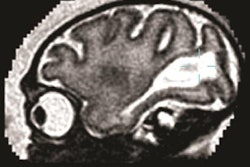Dear MRI Insider,
The first five years of a person's life are when the most dynamic changes in brain development occur. Understanding what's happening in the brain during this key period is the goal of a new project being launched by researchers from the University of North Carolina (UNC) at Chapel Hill and the University of Minnesota.
The Baby Connectome Project will track and analyze the brain's evolution through regularly scheduled MRI scans, and explore how lifestyle and environmental factors may have long-term effects on a child's cognitive development and personal success.
Weili Lin, PhD, a professor of neurological medicine at UNC and principal investigator of the project, said the potential for understanding brain development has "profound implications in many different areas, including neurodevelopmental disorders."
Learn more about the project -- and how researchers plan to keep these typically fidgety patients as quiet as possible during their MRI scans -- in this edition's Insider Exclusive.
As more people are expected to contract the Zika virus in the U.S., researchers at the University of Washington used a pregnant monkey to see how quickly the disease spreads from the mother to its fetus. The findings could shape efforts to develop a vaccine or effective form of prenatal treatment for human mothers-to-be who have contracted the virus.
Meanwhile, radiologists at Emory University are getting by with a little help from their electrophysiology friends. Together the specialists are ensuring the safety of patients with cardiac implantable electronic devices during MRI scans, achieving diagnostic-quality images, reducing artifacts, and enhancing workflow.
The use of MRI to assess knee problems is growing due to the modality's sensitivity in detecting intra-articular pathology, but a new study concluded that x-ray is still the best tool for screening patients ages 40 years and older who have knee pain.
Finally, using diffusion-tensor MRI, researchers have located two areas of the brain with increased atrophy, infarctions, and lesions that collectively create a kind of logjam that contributes to cognitive impairment and/or dementia. The abnormalities in the medial temporal lobe and subcortical region may provide a window into how cerebrovascular disease contributes to cognitive issues.
Visit the MRI Community at AuntMinnie.com as part of your daily routine for the latest news and groundbreaking research from around the world.



.fFmgij6Hin.png?auto=compress%2Cformat&fit=crop&h=100&q=70&w=100)




.fFmgij6Hin.png?auto=compress%2Cformat&fit=crop&h=167&q=70&w=250)











